NTC Pedagogy For Primary And JHS Questions And Answers (Motivation And Assessment)
NTC Pedagogy For Primary And JHS Questions And Answers (Motivation And Assessment)
In the context of teaching, motivation refers to the strategies and techniques employed by educators to inspire and encourage students to engage actively in the learning process, achieve their academic goals, and develop a positive attitude towards education.
Motivation in teaching is essential for creating a dynamic and effective learning environment, where students are motivated to learn, explore, and excel.
NTC Pedagogy For Primary And JHS Questions And Answers (Motivation And Assessment)
NTC Pedagogy For Primary And JHS Questions And Answers(Questioning and Feedback)
NTC Pedagogy For Primary And JHS Questions And Answers(Classroom Management)
NTC Pedagogy For Primary And JHS Questions And Answers (Lesson Planning)
NTC Pedagogy For Primary And JHS Questions And Answers (Inclusion Learning)
NTC Pedagogy For Primary And JHS Questions And Answers (Differentiated And Scaffolding)
NTC Pedagogy For Primary And JHS Questions And Answers (Curriculum)
NTC Pedagogy For Primary And JHS Questions And Answers (Methods Of Teaching Primary And JHS) 1
NTC Pedagogy For Primary And JHS Questions And Answers (Methods Of Teaching Primary And JHS) 2
JOIN OUR WHATSAPP GROUP HERE
It involves understanding and addressing the various factors that influence students’ willingness and enthusiasm to participate in class activities and pursue academic excellence.
Here are some key aspects of motivation in teaching
- Creating Relevance: Teachers can enhance motivation by connecting the subject matter to students’ real-life experiences, interests, and aspirations. When students understand the relevance and applicability of what they are learning, they are more likely to stay engaged and motivated.
- Establishing Clear Goals: Setting clear and achievable learning objectives helps students understand what is expected of them and provides a sense of direction. Well-defined goals give students a sense of purpose and motivate them to work towards accomplishing those objectives.
- Recognizing Individual Differences: Recognizing that students have diverse interests, learning styles, and motivations is crucial. Teachers can cater to these individual differences by offering varied learning activities, allowing for some autonomy in assignments, and accommodating different strengths and preferences.
- Promoting Intrinsic Motivation: Encouraging intrinsic motivation is a powerful tool in teaching. By fostering a love for learning, curiosity, and a growth mindset, educators can help students become self-driven learners who actively seek knowledge and personal development.
- Providing Positive Feedback: Offering constructive and positive feedback is essential for motivating students. Recognizing and acknowledging their efforts and progress, even if they make mistakes, helps build self-confidence and encourages further engagement.
- Using Varied Teaching Methods: Employing diverse teaching techniques, such as interactive discussions, hands-on activities, multimedia presentations, and group projects, can cater to different learning preferences and sustain students’ interest.
- Encouraging Autonomy: Allowing students to have some control over their learning choices and decision-making can increase their sense of responsibility and autonomy, leading to higher levels of motivation.
- Fostering a Supportive Environment: Creating a positive and supportive classroom atmosphere, where students feel safe to express their thoughts and take risks, promotes motivation and encourages active participation.
- Promoting Goal-Setting and Self-Reflection: Teaching students to set their own goals and reflect on their progress empowers them to take ownership of their learning journey and motivates them to strive for continuous improvement.
- Celebrating Success: Celebrating academic achievements, both big and small, reinforces students’ sense of accomplishment and boosts their motivation to perform well.
NTC Pedagogy For Primary And JHS Questions And Answers (Motivation And Assessment)
NTC Pedagogy For Primary And JHS Questions And Answers(Questioning and Feedback)
NTC Pedagogy For Primary And JHS Questions And Answers(Classroom Management)
NTC Pedagogy For Primary And JHS Questions And Answers (Lesson Planning)
NTC Pedagogy For Primary And JHS Questions And Answers (Inclusion Learning)
NTC Pedagogy For Primary And JHS Questions And Answers (Differentiated And Scaffolding)
NTC Pedagogy For Primary And JHS Questions And Answers (Curriculum)
NTC Pedagogy For Primary And JHS Questions And Answers (Methods Of Teaching Primary And JHS) 1
NTC Pedagogy For Primary And JHS Questions And Answers (Methods Of Teaching Primary And JHS) 2
JOIN OUR WHATSAPP GROUP HERE
HERE ARE THE QUESTIONS AND ANSWERS UNDER IT PLEASE
- What is the primary difference between intrinsic and extrinsic motivation?
a) Intrinsic motivation originates from external factors.
b) Extrinsic motivation is driven by external rewards.
c) Intrinsic motivation is self-determined and comes from within.
d) Extrinsic motivation is the desire for personal satisfaction.
Answer: c) Intrinsic motivation is self-determined and comes from within.
2. Which type of motivation involves engaging in an activity for the inherent satisfaction it provides?
a) Intrinsic motivation
b) Extrinsic motivation
c) Internal motivation
d) External motivation
Answer: a) Intrinsic motivation
3. Providing tangible rewards like money or grades is an example of:
a) Intrinsic motivation
b) Extrinsic motivation
c) Internal reinforcement
d) External reinforcement
Answer: b) Extrinsic motivation
4. What is one way to promote intrinsic motivation in students?
a) Offering external rewards for good performance
b) Creating a positive learning environment
c) Setting clear learning goals
d) Providing timely and constructive feedback
Answer: b) Creating a positive learning environment
5. Which theory emphasizes the importance of autonomy, competence, and relatedness in fostering intrinsic motivation?
a) Expectancy-Value Theory
b) Goal-Setting Theory
c) Maslow’s Hierarchy of Needs
d) Self-Determination Theory
Answer: d) Self-Determination Theory
NTC Pedagogy For Primary And JHS Questions And Answers (Motivation And Assessment)
NTC Pedagogy For Primary And JHS Questions And Answers(Questioning and Feedback)
NTC Pedagogy For Primary And JHS Questions And Answers(Classroom Management)
NTC Pedagogy For Primary And JHS Questions And Answers (Lesson Planning)
NTC Pedagogy For Primary And JHS Questions And Answers (Inclusion Learning)
NTC Pedagogy For Primary And JHS Questions And Answers (Differentiated And Scaffolding)
NTC Pedagogy For Primary And JHS Questions And Answers (Curriculum)
NTC Pedagogy For Primary And JHS Questions And Answers (Methods Of Teaching Primary And JHS) 1
NTC Pedagogy For Primary And JHS Questions And Answers (Methods Of Teaching Primary And JHS) 2
JOIN OUR WHATSAPP GROUP HERE
6. How can teachers make learning more relevant for students?
a) Assigning more homework
b) Connecting classroom content to real-life situations
c) Increasing the difficulty of exams
d) Decreasing the use of technology in the classroom
Answer: b) Connecting classroom content to real-life situations
7. What can teachers do to promote student autonomy in the classroom?
a) Micromanaging students’ activities
b) Limiting choices in assignments
c) Allowing students to make decisions about their learning
d) Removing all choices and decisions from students
Answer: c) Allowing students to make decisions about their learning
8. Which strategy involves incorporating group discussions and problem-solving exercises into lessons?
a) Providing constructive feedback
b) Using active learning techniques
c) Recognizing student achievements
d) Encouraging collaboration
Answer: b) Using active learning techniques
9. How can teachers foster a positive learning environment in the classroom?
a) Promoting competition among students
b) Encouraging students to criticize each other’s ideas
c) Establishing a supportive and inclusive atmosphere
d) Discouraging student participation in class discussions
Answer: c) Establishing a supportive and inclusive atmosphere
NTC Pedagogy For Primary And JHS Questions And Answers (Motivation And Assessment)
NTC Pedagogy For Primary And JHS Questions And Answers(Questioning and Feedback)
NTC Pedagogy For Primary And JHS Questions And Answers(Classroom Management)
NTC Pedagogy For Primary And JHS Questions And Answers (Lesson Planning)
NTC Pedagogy For Primary And JHS Questions And Answers (Inclusion Learning)
NTC Pedagogy For Primary And JHS Questions And Answers (Differentiated And Scaffolding)
NTC Pedagogy For Primary And JHS Questions And Answers (Curriculum)
NTC Pedagogy For Primary And JHS Questions And Answers (Methods Of Teaching Primary And JHS) 1
NTC Pedagogy For Primary And JHS Questions And Answers (Methods Of Teaching Primary And JHS) 2
JOIN OUR WHATSAPP GROUP HERE
10. Why is it important to celebrate students’ achievements and progress?
a) To make other students jealous
b) To create a sense of accomplishment and motivation
c) To create a competitive atmosphere
d) To put pressure on students to perform better
Answer: b) To create a sense of accomplishment and motivation
11. What is the significance of setting clear learning goals for students?
a) It increases competition among students.
b) It helps students earn more rewards.
c) It provides students with direction and purpose.
d) It reduces students’ interest in learning.
Answer: c) It provides students with direction and purpose.
12. How can teachers utilize technology in the classroom to enhance motivation?
a) By using technology to replace all traditional teaching methods
b) By incorporating educational apps and multimedia resources
c) By limiting students’ access to technology during class
d) By avoiding the use of technology altogether
Answer: b) By incorporating educational apps and multimedia resources
13. Which type of motivation may have a negative impact on creativity in some cases?
a) Intrinsic motivation
b) Extrinsic motivation
c) Goal-oriented motivation
d) Internal motivation
Answer: b) Extrinsic motivation
14. What is the potential drawback of relying too much on extrinsic rewards for motivation?
a) It can lead to decreased interest in learning.
b) It can enhance students’ intrinsic motivation.
c) It can foster a sense of autonomy in students.
d) It can create a positive learning environment.
Answer: a) It can lead to decreased interest in learning.
NTC Pedagogy For Primary And JHS Questions And Answers (Motivation And Assessment)
NTC Pedagogy For Primary And JHS Questions And Answers(Questioning and Feedback)
NTC Pedagogy For Primary And JHS Questions And Answers(Classroom Management)
NTC Pedagogy For Primary And JHS Questions And Answers (Lesson Planning)
NTC Pedagogy For Primary And JHS Questions And Answers (Inclusion Learning)
NTC Pedagogy For Primary And JHS Questions And Answers (Differentiated And Scaffolding)
NTC Pedagogy For Primary And JHS Questions And Answers (Curriculum)
NTC Pedagogy For Primary And JHS Questions And Answers (Methods Of Teaching Primary And JHS) 1
NTC Pedagogy For Primary And JHS Questions And Answers (Methods Of Teaching Primary And JHS) 2
JOIN OUR WHATSAPP GROUP HERE
15. Which theory proposes that motivation is determined by an individual’s expectation of success and the value they place on a goal?
a) Expectancy-Value Theory
b) Goal-Setting Theory
c) Maslow’s Hierarchy of Needs
d) Self-Determination Theory
Answer: a) Expectancy-Value Theory
16. What can teachers do to encourage creativity and innovation in students?
a) Limiting opportunities for experimentation
b) Providing specific instructions for every task
c) Promoting intrinsic motivation
d) Allowing students to explore and take risks
Answer: d) Allowing students to explore and take risks
17. Why is it important for teachers to differentiate instruction in the classroom?
a) To discourage collaboration among students
b) To make learning more challenging for all students
c) To meet the diverse needs and interests of students
d) To eliminate individual learning preferences
Answer: c) To meet the diverse needs and interests of students
18. Which type of motivation can be more sustainable over time due to its inherent satisfaction?
a) Intrinsic motivation
b) Extrinsic motivation
c) External motivation
d) Internal motivation
Answer: a) Intrinsic motivation
NTC Pedagogy For Primary And JHS Questions And Answers (Motivation And Assessment)
NTC Pedagogy For Primary And JHS Questions And Answers(Questioning and Feedback)
NTC Pedagogy For Primary And JHS Questions And Answers(Classroom Management)
NTC Pedagogy For Primary And JHS Questions And Answers (Lesson Planning)
NTC Pedagogy For Primary And JHS Questions And Answers (Inclusion Learning)
NTC Pedagogy For Primary And JHS Questions And Answers (Differentiated And Scaffolding)
NTC Pedagogy For Primary And JHS Questions And Answers (Curriculum)
NTC Pedagogy For Primary And JHS Questions And Answers (Methods Of Teaching Primary And JHS) 1
NTC Pedagogy For Primary And JHS Questions And Answers (Methods Of Teaching Primary And JHS) 2
JOIN OUR WHATSAPP GROUP HERE
19. What is the primary goal of providing constructive feedback to students?
a) To discourage students from trying again
b) To provide praise for their achievements
c) To guide them toward areas of improvement
d) To compare students’ performance
Answer: c) To guide them toward areas of improvement
20. Which theory proposes a hierarchy of human needs, with self-actualization as the highest level?
a) Expectancy-Value Theory
b) Goal-Setting Theory
c) Maslow’s Hierarchy of Needs
d) Self-Determination Theory
Answer: c) Maslow’s Hierarchy of Needs
21. How can teachers challenge and stretch students’ capabilities in the classroom?
a) By assigning repetitive tasks
b) By providing minimal guidance on assignments
c) By giving students easy and achievable goals
d) By avoiding any challenging activities
Answer: b) By providing minimal guidance on assignments
NTC Pedagogy For Primary And JHS Questions And Answers (Motivation And Assessment)
NTC Pedagogy For Primary And JHS Questions And Answers(Questioning and Feedback)
NTC Pedagogy For Primary And JHS Questions And Answers(Classroom Management)
NTC Pedagogy For Primary And JHS Questions And Answers (Lesson Planning)
NTC Pedagogy For Primary And JHS Questions And Answers (Inclusion Learning)
NTC Pedagogy For Primary And JHS Questions And Answers (Differentiated And Scaffolding)
NTC Pedagogy For Primary And JHS Questions And Answers (Curriculum)
NTC Pedagogy For Primary And JHS Questions And Answers (Methods Of Teaching Primary And JHS) 1
NTC Pedagogy For Primary And JHS Questions And Answers (Methods Of Teaching Primary And JHS) 2
JOIN OUR WHATSAPP GROUP HERE
22. What can teachers do to foster a sense of belonging and relatedness among students?
a) Encouraging competition among peers
b) Discouraging collaboration and teamwork
c) Promoting a supportive and inclusive classroom environment
d) Reducing opportunities for social interaction
Answer: c) Promoting a supportive and inclusive classroom environment
23. Which type of motivation may involve providing students with choices in assignments or projects?
a) Intrinsic motivation
b) Extrinsic motivation
c) Internal motivation
d) External motivation
Answer: b) Extrinsic motivation
24. How can teachers encourage collaboration and peer support in the classroom?
a) Promote competition among students to achieve higher performance
b) Discourage group activities to avoid distractions
c) Assign individual tasks to enhance self-reliance
d) Foster teamwork and group projects
Answer: d) Foster teamwork and group projects
25. What role does teacher enthusiasm and passion play in motivating students?
a) It is irrelevant to student motivation.
b) It can be a distraction for students.
c) It can inspire students and increase their motivation.
d) It may lead to increased disciplinary issues in the classroom.
Answer: c) It can inspire students and increase their motivation.
NTC Pedagogy For Primary And JHS Questions And Answers (Motivation And Assessment)
NTC Pedagogy For Primary And JHS Questions And Answers(Questioning and Feedback)
NTC Pedagogy For Primary And JHS Questions And Answers(Classroom Management)
NTC Pedagogy For Primary And JHS Questions And Answers (Lesson Planning)
NTC Pedagogy For Primary And JHS Questions And Answers (Inclusion Learning)
NTC Pedagogy For Primary And JHS Questions And Answers (Differentiated And Scaffolding)
NTC Pedagogy For Primary And JHS Questions And Answers (Curriculum)
NTC Pedagogy For Primary And JHS Questions And Answers (Methods Of Teaching Primary And JHS) 1
NTC Pedagogy For Primary And JHS Questions And Answers (Methods Of Teaching Primary And JHS) 2
JOIN OUR WHATSAPP GROUP HERE
26. Question: What role does motivation play in a student’s academic success?
Answer: Motivation plays a crucial role in a student’s academic success by enhancing their learning, increasing effort and persistence, and fostering a positive attitude towards learning.
27. Question: How can intrinsic motivation benefit students in the long term?
Answer: Intrinsic motivation, driven by personal interest or enjoyment, can benefit students in the long term by promoting autonomous learning, building a growth mindset, and leading to sustained academic achievement.
28. Question: What are the two main types of motivation, and how do they differ?
Answer: The two main types of motivation are intrinsic motivation (internal, driven by personal interest) and extrinsic motivation (external, driven by rewards or consequences). Intrinsic motivation is considered more sustainable and conducive to long-term learning.
29. Question: How can teachers create a positive learning environment to foster motivation?
Answer: Teachers can create a positive learning environment by being supportive, encouraging, and non-judgmental, allowing students to feel comfortable taking risks and expressing their thoughts.
30. Question: What impact can a growth mindset have on students’ willingness to embrace challenges?
Answer: A growth mindset can encourage students to embrace challenges because they believe their abilities can improve through effort and dedication, leading to greater resilience and motivation.
31. Question: Why is it important for educators to understand individual differences in student motivation?
Answer: Understanding individual differences in student motivation allows educators to adapt their teaching strategies to cater to diverse motivations, resulting in better learning outcomes for all students.
32. Question: How can offering choice and autonomy in learning contribute to student motivation?
Answer: Offering choice and autonomy in learning allows students to have a sense of control over their education, which can lead to increased motivation and engagement in the learning process.
33. Question: What are some strategies teachers can use to celebrate students’ efforts and progress?
Answer: Teachers can celebrate students’ efforts and progress by acknowledging their hard work, providing specific and constructive feedback, and recognizing incremental improvements.
NTC Pedagogy For Primary And JHS Questions And Answers (Motivation And Assessment)
NTC Pedagogy For Primary And JHS Questions And Answers(Questioning and Feedback)
NTC Pedagogy For Primary And JHS Questions And Answers(Classroom Management)
NTC Pedagogy For Primary And JHS Questions And Answers (Lesson Planning)
NTC Pedagogy For Primary And JHS Questions And Answers (Inclusion Learning)
NTC Pedagogy For Primary And JHS Questions And Answers (Differentiated And Scaffolding)
NTC Pedagogy For Primary And JHS Questions And Answers (Curriculum)
NTC Pedagogy For Primary And JHS Questions And Answers (Methods Of Teaching Primary And JHS) 1
NTC Pedagogy For Primary And JHS Questions And Answers (Methods Of Teaching Primary And JHS) 2
JOIN OUR WHATSAPP GROUP HERE
34. Question: How can educators connect classroom learning to real-life relevance?
Answer: Educators can connect classroom learning to real-life relevance by demonstrating how the concepts students are learning apply to practical situations, making the material more meaningful and motivating.
35. Question: Besides academic achievement, what are some benefits of motivation in the classroom?
Answer: In addition to academic achievement, motivation in the classroom can lead to higher self-esteem and confidence, better classroom behavior, and a lifelong love for learning.
NTC Pedagogy For Primary And JHS Questions And Answers (Motivation And Assessment)
NTC Pedagogy For Primary And JHS Questions And Answers(Questioning and Feedback)
NTC Pedagogy For Primary And JHS Questions And Answers(Classroom Management)
NTC Pedagogy For Primary And JHS Questions And Answers (Lesson Planning)
NTC Pedagogy For Primary And JHS Questions And Answers (Inclusion Learning)
NTC Pedagogy For Primary And JHS Questions And Answers (Differentiated And Scaffolding)
NTC Pedagogy For Primary And JHS Questions And Answers (Curriculum)
NTC Pedagogy For Primary And JHS Questions And Answers (Methods Of Teaching Primary And JHS) 1
NTC Pedagogy For Primary And JHS Questions And Answers (Methods Of Teaching Primary And JHS) 2
JOIN OUR WHATSAPP GROUP HERE
RELATED SEARCHES
Questions and answers Explain the concept of motivation. NTC GTLE Content Areas questions and answers, NTC Past Question On Pedagogy Of Primary And JHS
Questions and answers Distinguish between the types of motivation. NTC GTLE Content Areas questions and answers, NTC Past Question On Pedagogy Of Primary And JHS
Questions and answers Describe the strategies employed in motivating students in the classroom. NTC GTLE Content Areas questions and answers, NTC Past Question On Pedagogy Of Primary And JHS
Questions and answers Discuss the importance of motivation with students in the classroom. NTC GTLE Content Areas questions and answers, NTC Past Question On Pedagogy Of Primary And JHS

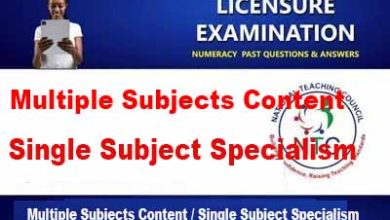
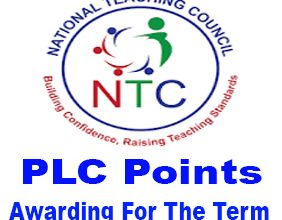

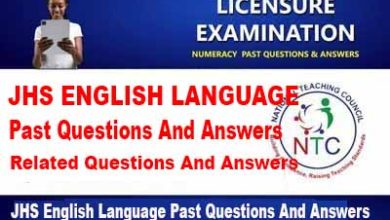
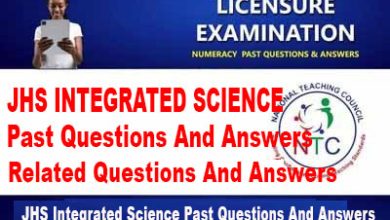
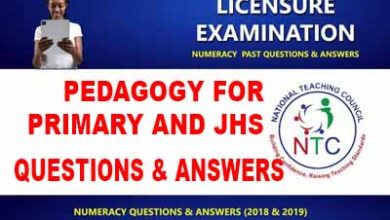
One Comment